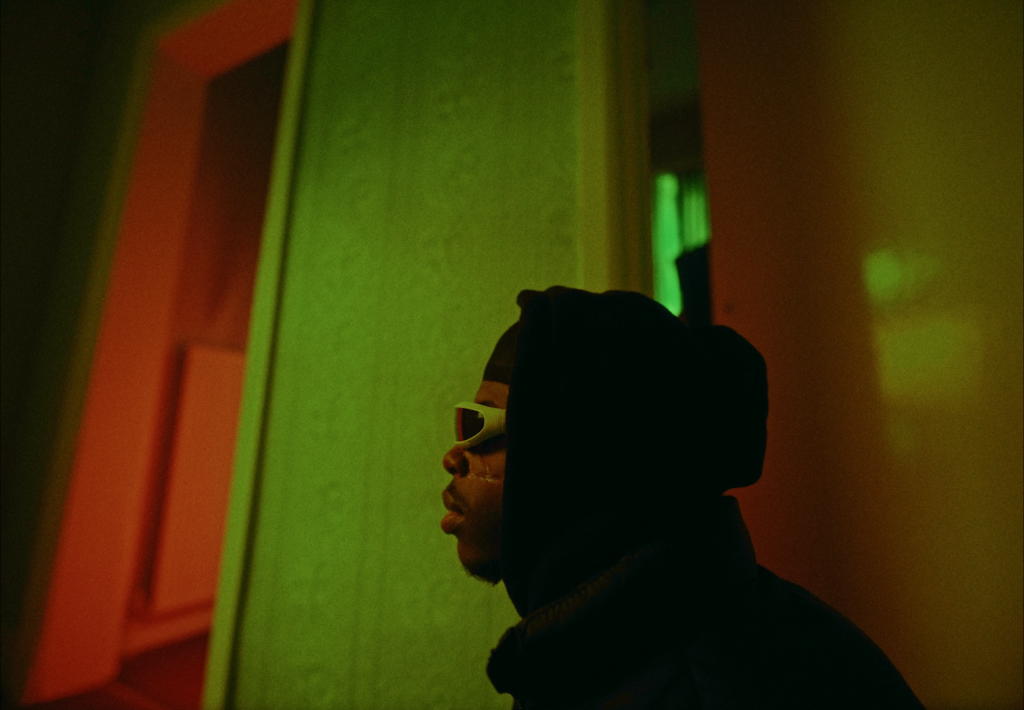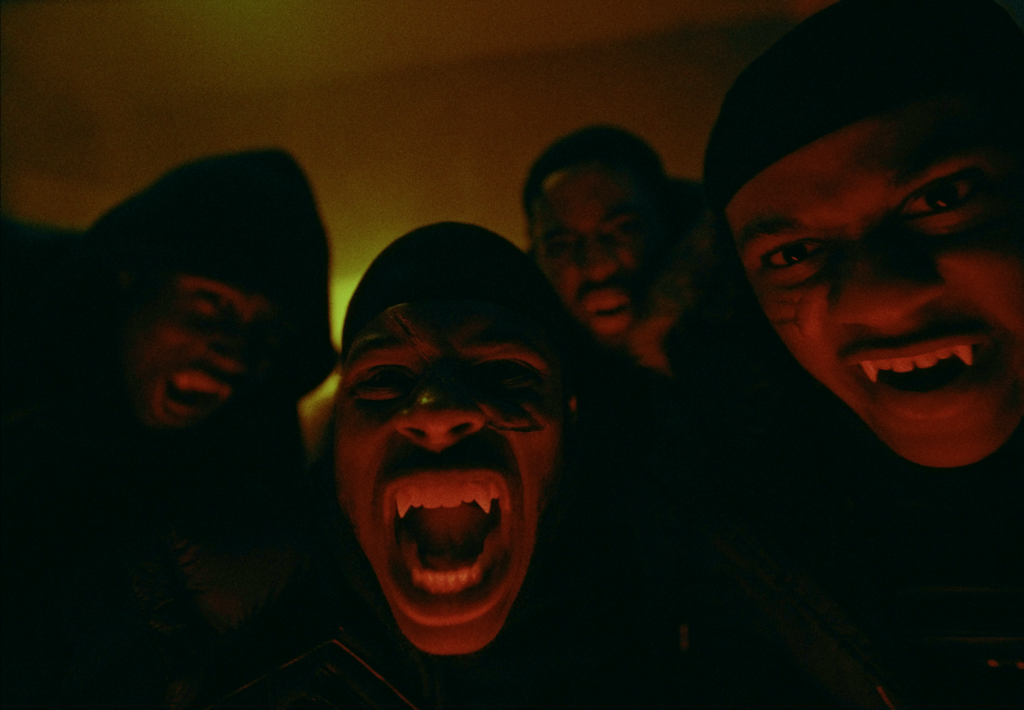1.4 / Animal Instincts: Shan Phearon
Shan Phearon
Your most recent music video for Jazmin Bean uses Puppy Pound as an analogy for being discarded by a lover. How did you collaborate with the artist to bring this idea to life? Were you brought onboard with a clear idea already in mind?
I think the analogy is multi-dimensional. The artist will always have their own intrinsic meaning and in turn I’ve my own reading. We add meaning to each other’s meaning.
In the context of this artist’s realm, it might also be an analogy for social media: artifice, ensnarement, abuse, deformation, performance. It’s like… welcome to the dog show. Yet amongst fakery and fickleness, the dogs are a symbol of loyalty – in my belief the ultimate quality.
Emily Jeffery (commissioner), Holly Williams (label CD) and, vitally, Jazmin and manager Donny Tourette came to me with a few scenes they wanted brought to life with enhancements. They had me at the words “Tim Burton”.
We all worked together for multiple months on just the development phase alone to craft Jazmin’s next video era before shooting. Deep analysis, studying the artist’s history, time with them, learning to live in their head, I also went ‘undercover’ in Jazmin forums across platforms – so we could fan service and evolve.
What were the challenges of the production? Did working with so many dogs (and a goat) cause any issues?
Jazmin is a rare kind of artist now in the UK. Maverick, unorthodox. Maybe the next gen’s Marilyn Manson. They also manage widely-publicised Asperger’s and are a positive icon for teen mental health. A unique dynamic; through nurture we grew and overcame psychological hurdles together.
Now the real challenges… directing animals is a fucking nightmare. I had to mop the goat’s piss up myself at one point because I felt bad for the runners. Luckily I’m a big animal lover.
World-building Jazmin’s singular aesthetic universe was a conundrum too. Eventually I advised ‘the American system’ of combining set-builds (courtesy of production designer Anthony Hensman) with green-screen CGI. On top we harnessed late 90s / early 00s Alt-Rock & Metal inspired cinematography (thanks to DP Nathalie Pitters, as kids we both grew up on those MTV eras). Creative solutions always.
You’ve said before that you can become fixated on “visual maximalism”, and this is certainly true for Puppy Pound. Have you always found yourself drawn to maximalism?
It’s just a bit of Chaos theory manifesting itself. A reflection of the times. Our accelerating psyche. Everything is chaos.
I’m not solely bound to maximalism (applicable to certain artists, certain creative) or any one tonal approach. I love minimalism too. Extremes are fun, sometimes.
Potter Payper, Gangsteritus
For Potter Payper’s Gangsteritus (artist’s cut and especially director’s cut), you and your team constructed a UV Blacklight drone, a world first, to capture the unique vibe of the video. What can you tell us about the process of getting that together?
One from a vault of ideas built up over years. I’d written two other grand outdoor UV treatments in the past that hadn’t come to fruition. Now Apple Music (including CDs Tawbox) and Def Jam 0207 (commissioner Nicola Sheppard + Jackie Eyewe) sought something special… and making something for the iconic Def Jam label was like getting to live out a childhood dream…
Shot last August, still in the pandemic midst, we were up against countless parameters.
I felt certain there hadn’t been a mobile flying UV light on camera before. If we can say “not been done exactly quite like that yet”, it’s our start. I gave my blueprints to Producer Ellis Fox (a ride-or-die), he somehow found an expert drone team excited by our stupid ideas. I worked closely with a dedicated engineer (Will Glover) as he built and trialled multiple prototypes.
The compromise: our limited wattage UV prototype light could only be up in the air for 3 minutes at a time before battery death and nail-biting resets. As the piece is heavily about mortality, a thematic aerial design meant I wanted this UV drone to be followed or circled by 2 other types of aerial camera drones – one Alexa LF + one FPV – each with their own time limits. This often meant 1 take max.
There was complex staging and blocking on the ground for dozens of cast that had to be rehearsed on set, long-take lip sync artist performance and a short Summer’s night window for the UV light to work visibly from 9pm to 4am. We were shooting in a pitch-black, enormous, open-air abyss, middle of nowhere with 80+ people on set. So everything was hardcore pre-planning & hella animatics.
All of this was happening in the 1.5 weeks we had for pre-production. Probably one of our more nuts missions, reliant on practical and technical execution (gratitude to Greatcoat Films, Simon Oxley, Kareem Adeshina & co for supporting).
Filmmaking is an immortalisation process. If you’re putting something small but new into the world that other film creatives can build on in the future, it’s worth it. If all involved in a project can say they’ve tried something to push the needle even just a tiny bit (whether in Rap video culture or Video scene culture), it’s always worth it. The song going on to feature now famously in Netflix’s Top Boy, become Def Jam 0207 & Potter’s first UK Top 15 chart single and earn praise as one all time modern UK rap classic by culture pundits and fans… just bittersweet.
One Acen, Nigeria
The colour palette generated by using the blacklight is also present in your work for One Acen’s Nigeria and Tiggs feat. Nines Fly ‘Em High. What is it about pairing the dark blues with the glowing neons that draws you to it? Have you always been attracted to futuristic colours and styles?
The present is the future. That’s one philosophy.
But it’s less about an aesthetic, more about mindset. I respect Futurists. They are brave to think ahead of their time and help guide culture. Pedestrians don’t. Futurism is one approach that blends with any style.
I admire how UV light can bend towards purple, blue, indigo, violet. It’s also a soulful reminder that everything and everyone is electricity (seriously, look up atoms).
Fundamentally it’s just a texture. As a kid, I gravitated towards ’90s renaissance / Y2K period Black cinema, music videos & associated visual language. This one texture was present in those works. It’s been homage to futurist artists that came before. The past is also the future.
Tiggs feat. Nines Fly ‘Em High
When working on Jevon’s Na Hora, how did you approach bringing Brazilian culture and language, central to the theme of the whole album Fell In Love In Brazil, from the music into the visual?
That project seemed compelling. At the time no other artist in the UK music space was doing Jevon’s thing, sonically or narratively. He felt like a maverick, risking going against the grain even if peers hadn’t caught up yet.
I’d visited Rio’s favelas on behalf of charity work years ago. Seen the light and the dark too. I feel a deep empathy for anyone suffering the effects of hardship.
We fed all that energy together into the visual ambition. Like… we’ll dispatch three far-right Jair Bolsonaro look-alikes. Set everything on fire like that being done to the Amazon rainforest. Morally ambiguous angels. Infants with uzis. Slave history. Satirical, socio-political, mystical, whatever… let’s spit out post-colonialism and leave enough for the audience to decode.
It felt like if we’ve audacity to broach these difficult themes, then we need to be ballsy with the visual. Indigenous Latin Americans have been harmed for centuries and many remain economically oppressed today. We had the luxury position of being free speech artists, to provoke discourse, for the love of Brazil.
Jevon, Na Hora
What led you to directing – did you learn on the job or go to film school?
What leads anyone to directing? They must love suffering (ha).
From a young age, I’ve early memories of wanting to be an inventor. The story starts there. Fast forwarding…
Film school wasn’t an option. I and many other directors in my cultural radius came up in the trenches, where creativity and lateral thinking is perhaps built differently.
Film school often teaches tradition and many directors leave functional, competent, but without any enfant terrible verve.
Our film school and grasp of cinematic language came from: torrents, YouTube tutorials, fan theory video essays, copious digital short-form & other cutting edge arts scenes. It encouraged bending established rules. I believe most of this generation’s cinematic risk-takers & innovators work in short-form, especially music video (see the excitement The Daniels are causing in the US with their latest A24 flick).
The stylistic language itself of British cinema hasn’t been ultra-exciting since the ‘90s, maybe up to the mid ’00s, partly as there isn’t the same influx of music video and short-form directors transitioning into long-form narrative. (Honourable nods: ‘Under The Skin’ & ‘Catch Me Daddy’).
There’s a gen of directors right now that have the vitality to transcend any conservative reigns of the British narrative & feature film establishment, to re-invigorate, re-invent this country’s cinema. No film school, just new school.
What are you working on next?
A few things in the pipeline… NDA, TBC, etc! Above all, I’m trying to appreciate the moment I’m in and acknowledging the voyage so far. Creatively I feel in my best shape and ever-growing. Ready for what’s next.
Interview by Becca Nichols – FULL ARTICLE HERE




